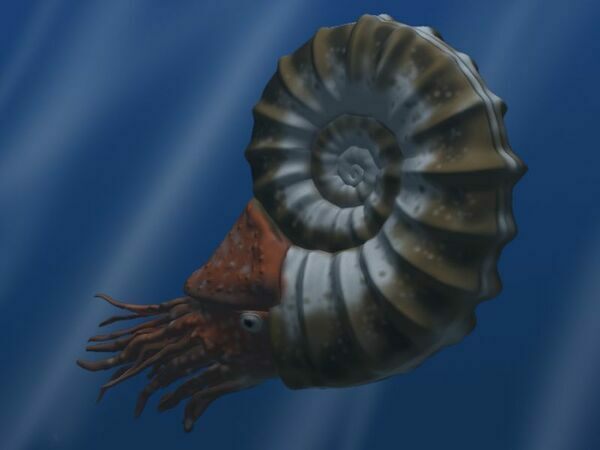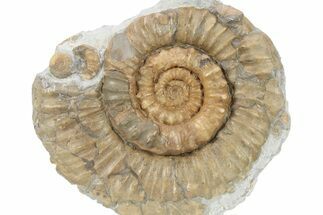18.5" Jurassic Ammonite (Metophioceras) Graveyard - Famous Location!
This is a rare, 18.5" wide section of rock containing several ammonite fossils of the genus/species Metophioceras (Coroniceras) conybeari. This species makes up the "ammonite pavement" (ammonite graveyard) of Monmouth Beach in Dorset, England. This land is protected and cannot be collected for commercial purposes, however this specimen eroded out of the cliffs above the pavement. They have been nicely prepared using mechanical tools to remove the surrounding limestone. This is a rare opportunity to own a one of a kind, museum quality ammonite specimen from a famous ammonite locale.
A metal display stand will accompany this specimen.
A metal display stand will accompany this specimen.
About Ammonites
Ammonites were ancient marine cephalopods, similar to today's squids and octopuses, but with a defining feature: their distinctive, tightly coiled spiral shells. These shells, resembling those of modern nautiluses, served as both a protective home and a buoyancy aid, allowing ammonites to navigate the prehistoric seas with ease. First emerging around 240 million years ago in the Triassic Period, ammonites thrived for over 175 million years, adapting through numerous forms and sizes. As predatory creatures, they likely fed on smaller marine organisms, using their tentacles to capture prey. However, their long reign came to an end 65 million years ago at the close of the Cretaceous, coinciding with the mass extinction event that also eliminated the dinosaurs.
Ammonites were ancient marine cephalopods, similar to today's squids and octopuses, but with a defining feature: their distinctive, tightly coiled spiral shells. These shells, resembling those of modern nautiluses, served as both a protective home and a buoyancy aid, allowing ammonites to navigate the prehistoric seas with ease. First emerging around 240 million years ago in the Triassic Period, ammonites thrived for over 175 million years, adapting through numerous forms and sizes. As predatory creatures, they likely fed on smaller marine organisms, using their tentacles to capture prey. However, their long reign came to an end 65 million years ago at the close of the Cretaceous, coinciding with the mass extinction event that also eliminated the dinosaurs.
$8,500
SPECIES
Metophioceras (Coroniceras) conybeari
LOCATION
Monmouth beach, Lyme Regis, Dorset, England
FORMATION
Bucklandi Zone - Lower Lias
SIZE
Largest Ammonite: 7" wide, Rock 18.5 x 12.3"
CATEGORY
SUB CATEGORY
ITEM
#316841
We guarantee the authenticity of all of our specimens.
 Reviews
Reviews

















